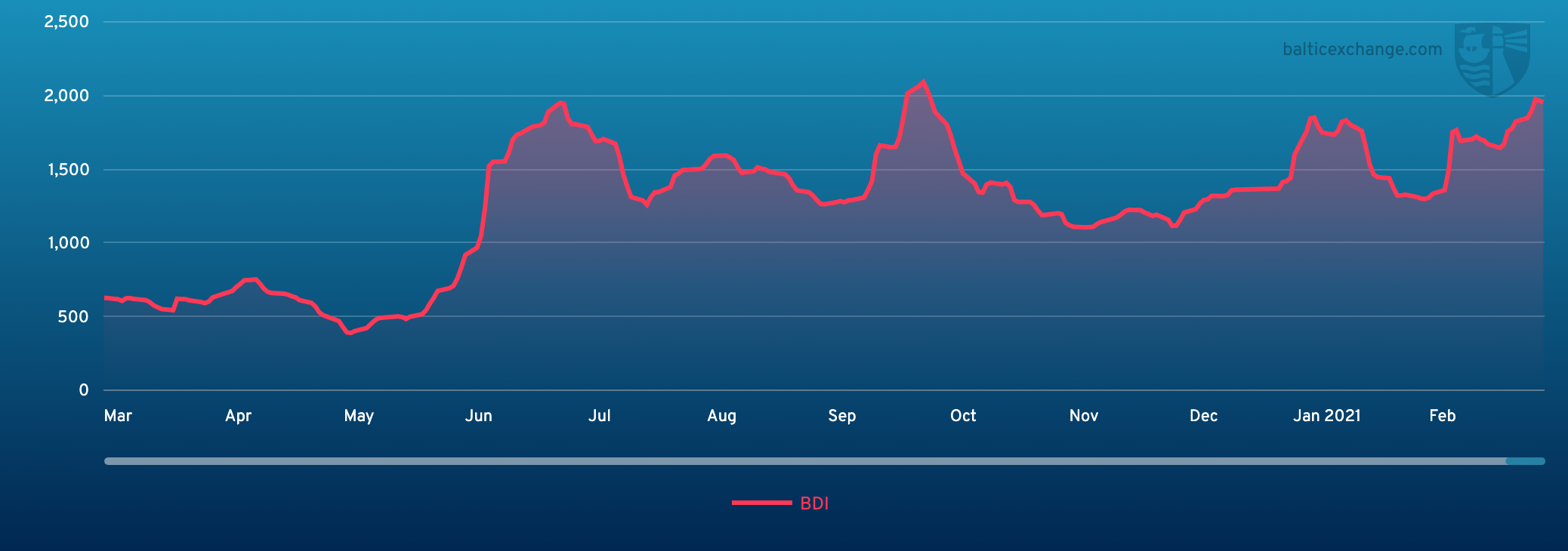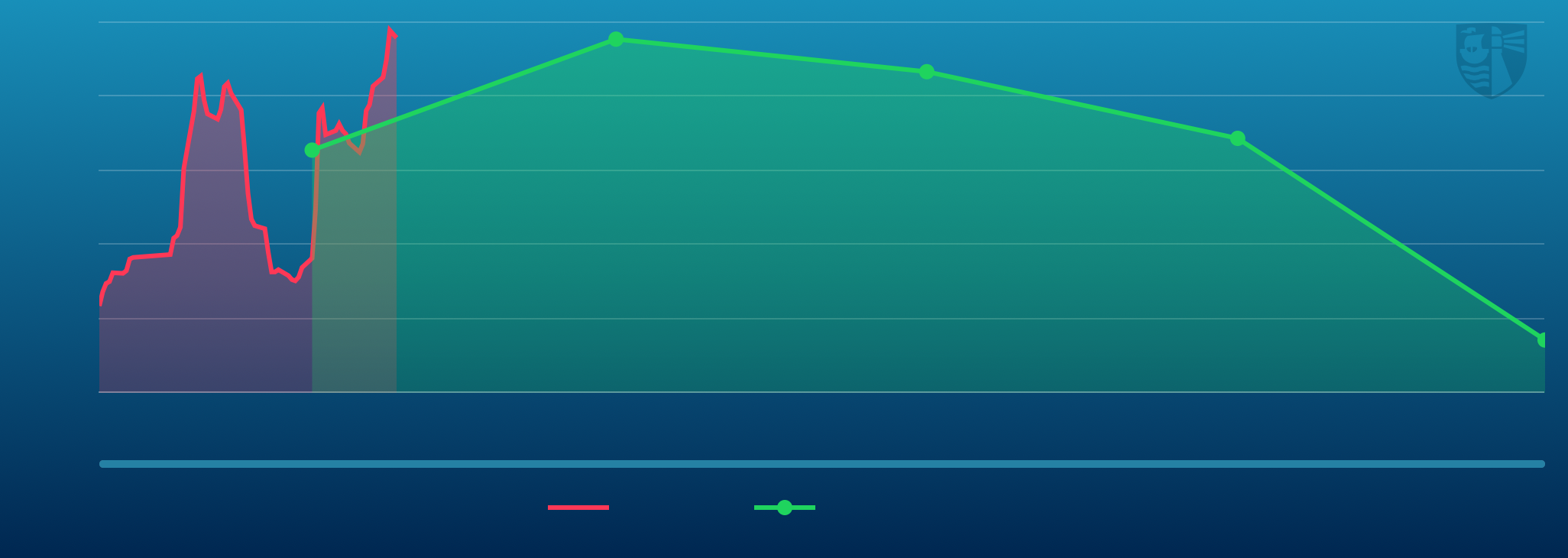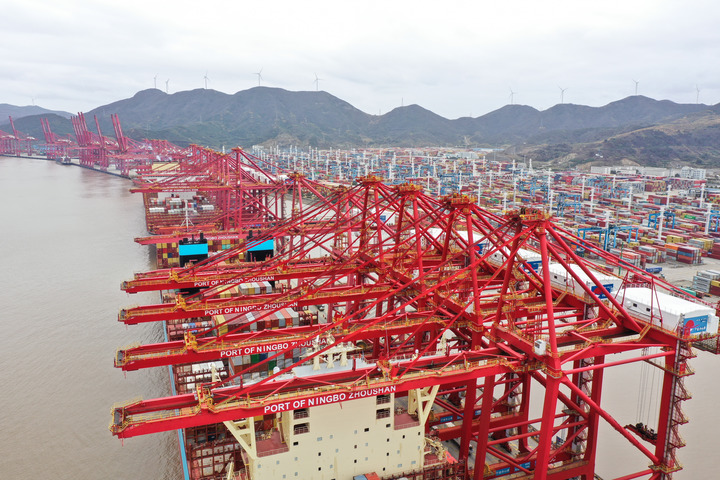BEIJING, March 17 (Xinhua) -- The Baltic Exchange has published its weekly report of the dry and tanker markets for March 8-12, 2021 as below:
Capesize
It was another rollercoaster week with high activity on the west Australia and Brazil to China routes. The Capesize 5TC opened the week at $14,794 to move quickly up to $17,889 at midweek before tailing off towards the weekend at $16,741. While the Transatlantic C8 was a calm seas story, the ballaster C14 and the trans-Pacific C10 routes drove rates hard and attracted tonnage for their region with values stalling out on Wednesday. On the ballaster route the tonnage levels remain substantial, with some suggestion of a lack of cargo for end March dates. In the Pacific, the West Australia to China C5 hit a high of $9.623 this week before coming off to settle at $9.155. With the commodity markets and the smaller vessel sizes still pushing up the Capesize sector is feeling supported. The values are ebbing and flowing with strength which is unusual for this time of the year. Capes are being heard taking unusual cargoes along several new routes as Owners, traders, and Charterers grapple with this exciting 2021 market they find themselves in.
Panamax
It has been an interesting week, where the Atlantic appeared to have a positional divide with the north Atlantic tonnage under pressure due to lack of demand. This resulted in fixtures on delivery at loadport basis seeming to be the norm for trans-Atlantic rounds, with $28,000/day concluded a few times via NC South America. Further south a steady flow of cargo from the Americas kept rates largely flat. However, pressure continues to mount on vessel arriving end March/early April in EC South America. Asia, conversely, has been steady all week with pockets of tonnage tightness in the north for the NoPac round trips affecting levels, which was demonstrated by a nice 82,000dwtdelivery Japan achieving $24,000/day for such trip. The mean average on the week is closer to $22,000. There was a steady flow of coal ex Indonesia to China supporting rates here to average out around the $22,500 level throughout the week. Period activity included an 81,000dwtdelivery far east achieving $17,250 for four to six months.
Ultramax/Supramax
Overall the market maintained the strong levels seen in recent weeks. There was, however, a contrast in sentiment between Asia and the Atlantic. Asia rose strongly whilst demand from some key areas within the Atlantic lacked momentum as the week ended. Period activity remained strong. A scrubber fitted 61,000dwtopen Singapore fixing four to six months trading at $26,250 with scrubber benefit for Owner’s account. Elsewhere, a 63,000dwtopen US Gulf fixed a short period at $21,000 plus $1 million ballast bonus. From the Atlantic a lack of fresh enquiry tempered rates. A 60,000dwtfixing a trip from US Gulf to Japan in the upper $30,000s and from the Mediterranean a scrubber fitted 55,000dwtfixing a trip from Italy to west Africa in the upper $20,000s. From Asia a 61,000dwtopen Malaysia was fixed for a trip via Indonesia to west coast India at $24,000. And from the Indian Ocean strong numbers remained as a 60,900dwtwas fixed from west coast India to China at $42,000.
Handysize
The week showed no sign of slowing down in both basins. As expected, both the overall index and time charter average climbed further with an increment of over 100 points and $2,000 respectively during the week. In the Atlantic, the Mediterranean market appeared to be slightly quieter compared with east coast South America and the US Gulf. Meanwhile, in the Pacific - in addition to short to medium period activity remaining vigorous - the Arabian Gulf market was said to be in full swing recently. A 32,000dwtdelivery Fujairah 20/25 March was fixed for short period in the low $20,000s. Inter-Persian Gulf petcoke paid $29,000 on a 32,000dwtdelivery Khalifa. A 38,000dwtopen CJK was fixed for four to six months at $21,000. A smaller 28,000dwtlogger open in southeast Asia was fixed for a trip via New Zealand to China at $20,000 and a 38,000dwtdid a similar run at $29,000.
VLCC
Overall rates slipped further downwards, for Middle East region 280,000mt to US Gulf via the Cape/Cape routing continues to be assessed at WS18-18.5 level. Meanwhile, rates for 270,000mt to China eased another 1.5 points to WS28-28.5 level (showing a TCE of minus $6,000/day). In the Atlantic region, 260,000mt West Africa to China saw rates similarly fall 1.5 points to WS32-32.5 level (a TCE of about minus $860/day) and 270,000mt from US Gulf to China saw rates dip a further $50,000 to $4.13m, giving a TCE of about $3,700k/day on a round-trip basis.
Suezmax
In the 135,000mt Black Sea/Med market rates have again remained at WS75 level ($7,300/day TCE), while the 130,000mt Nigeria/UK Continent market repeated a five-point gain to WS66 ($8,500/day TCE). The market for 140,000mt Basrah/Med remains static at the WS18-18.5 level.
Aframax
In the Mediterranean a busy fixing week has enabled owners to push rates up 12 points to WS112.5 for 80,000mt Ceyhan/Lavera (basis a round voyage, about $13,900/day TCE). In Northern Europe, bigger gains were made where 80,000mt Cross-North Sea rates climbed 19 points to WS115, while rates for 100,000mt Baltic/UK Continent advanced 23 points to WS110-112.5 level. On the other side of the Atlantic, a tightening position list and an influx of cargoes gave owners the upper hand. The 70,000mt Caribbean/US Gulf market saw rates climb 30 points to WS175 (a TCE of about $29.5k/day round trip) while in the 70,000mt US Gulf/UK Continent market rates rose 15 points to WS132.5-135 level.
Clean
It has been a more encouraging week for LR tonnage where rates for 75,000mt Middle East Gulf/Japan gained around 16 points to WS91.5 region. It was also a more active week on the LR1s as rates for 55,000mt to Japan increased around 12.5 points to sit now at WS107.5, with potential to increase further. That said, bunker prices have also risen so improvements on TCEs have been only limited. The AG/East Africa MR market has continued to firm. A week ago rates were in the mid WS160s, but have since risen to now sit around WS185 level. For MRs on Cont/USAC trade, it has been uneventful with early sentiment in the week up around five points to WS120. But subsequently, despite reasonable volumes of enquiry, things eased back down again to WS115 level with a number of ships presently fixed on subjects. It remains to be seen how many get confirmed. Backhaul trade from US Gulf to UK-Continent for MRs slightly improved from mid WS60s to just below WS70 and there was a similar modest firming trend in the US Gulf to Brazil trade where rates now sit at around WS109 representing an approximate three-point gain over the week. For Continent to West Africa, rates followed the pattern of the transatlantic market and eased five points to sit now at around WS125 level. There was a sense of deja vu for Handies cross-Mediterranean with rates opening this week at WS120 region for West Med load. Repsol fixed a Spanish Med load at a competitive WS115, but brokers generally feel the market for both west and east Med load is hovering closer to WS117.5/120 region with Black Sea paying WS135.
Headquartered in London and a subsidiary of the Singapore Exchange (SGX), the Baltic Exchange publishes a range of indices and assessments which provide an accurate and independent benchmark of the cost of transporting commodities and goods by sea. These include the Baltic Dry Index (BDI), the dry bulk shipping industry's best known indicator. Published daily since 1985, this provides a snapshot of the daily spot market earnings of capesize, panamax and supramax vessel types on the world's key trading routes.

Chart shows Baltic Dry Index (BDI) during March 13, 2020 to March 12, 2021

Baltic Forward Assessment for BDI
In March 2018 the BDI was re-weighted and is published using the following ratios of timecharter assessments: 40 percent capesize, 30 percent panamax and 30 percent supramax. The information is provided by a panel of international shipbrokers.
(Source: The Baltic Exchange, edited by Niu Huizhe with Xinhua Silk Road, niuhuizhe@xinhua.org)




 A single purchase
A single purchase









